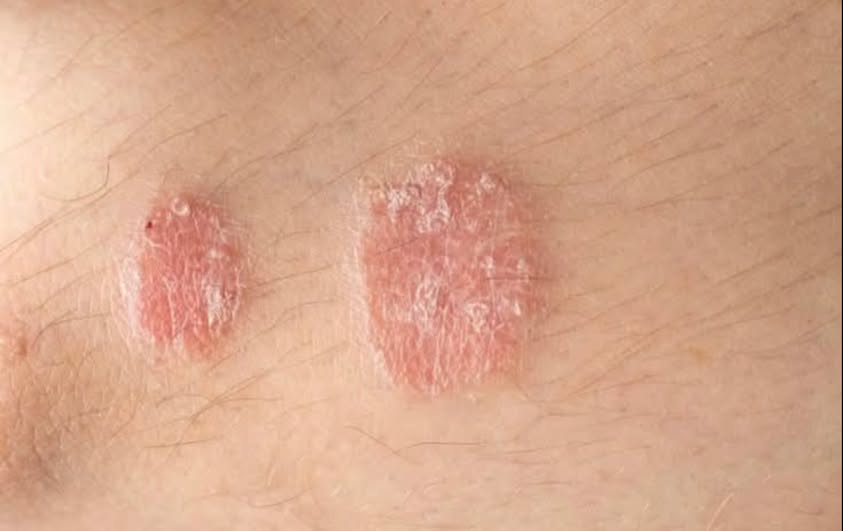When it comes to your skin, certain warning signs should never be ignored—especially when they could point to a chronic autoimmune condition like psoriasis. While often mistaken for a simple rash or skin irritation, psoriasis is far more complex. It’s an autoimmune disorder that speeds up the life cycle of skin cells, causing them to build up rapidly on the surface, leading to thick, scaly patches that may itch, crack, or bleed.

These symptoms can appear on various parts of the body and are not only physically uncomfortable but can also affect a person’s confidence and overall well-being. According to the Mayo Clinic, psoriasis typically presents as a rash with itchy, scaly areas, most commonly found on the knees, elbows, scalp, and trunk. It affects more than 125 million people globally, with around 8 million in the United States alone living with this long-term condition. Although the exact cause of psoriasis remains unknown, a combination of genetics and environmental triggers is believed to play a major role. The condition can be painful, interrupt sleep, and make daily tasks more challenging. Recognizing its symptoms early and seeking proper treatment is essential.
The National Psoriasis Foundation (NPF) has identified five main types of psoriasis, each with unique symptoms and health concerns. Plaque psoriasis is the most common form, marked by dry, raised, red patches of skin covered in silvery scales. These patches, known as plaques, are often itchy and can appear on the scalp, elbows, knees, and lower back. On darker skin, plaques may appear violet or dark brown and often leave behind discoloration even after healing. Guttate psoriasis, often triggered by bacterial infections such as strep throat, usually affects children and young adults. It presents as small, teardrop-shaped spots on the torso, arms, and legs. Unlike the thick plaques seen in plaque psoriasis, guttate spots are smaller and less scaly.
While it may resolve on its own in some cases, medical attention is recommended for proper diagnosis and treatment. Inverse psoriasis shows up in skin folds like the groin, under the breasts, or around the buttocks. Unlike other types, it doesn’t feature the hallmark scaly texture. Instead, it appears as smooth, shiny red patches that can worsen with friction or sweating. Because it’s found in areas where skin rubs together, it is often misdiagnosed as a fungal infection, which may also act as a trigger.
Keeping the area clean and dry is key to managing inverse psoriasis. Pustular psoriasis is less common but more severe in appearance. It is characterized by white pustules filled with non-infectious pus, surrounded by red, inflamed skin. These blisters can appear on the hands, feet, or even spread across the entire body. In many cases, pustular psoriasis comes with additional symptoms like fever, chills, and fatigue. This type requires immediate medical care, as it can escalate quickly and affect overall health. The most severe and rarest form is erythrodermic psoriasis. This condition results in widespread redness, severe scaling, peeling skin, intense itching, and burning sensations. It can cover most of the body and is considered a medical emergency. Erythrodermic psoriasis may be triggered by a severe sunburn, infection, or stopping psoriasis medications too suddenly. Immediate hospitalization is often necessary to stabilize the condition and prevent complications. Psoriasis doesn’t only affect the skin. The Mayo Clinic highlights that it can also impact the nails, causing them to become thick, pitted, discolored, or even separate from the nail bed—a condition known as onycholysis. Nail changes are not just cosmetic but can also be an early sign of psoriatic arthritis, a related autoimmune condition that causes joint inflammation and stiffness. Understanding the different types of psoriasis and recognizing their warning signs can empower you to take control of your health. If you notice new or unusual skin changes—such as persistent rashes, discolored plaques, smooth red patches in skin folds, blisters, or nail abnormalities—it’s important to consult a dermatologist. Early diagnosis and a personalized treatment plan can help manage symptoms, improve quality of life, and reduce the risk of complications. Psoriasis may be a lifelong condition, but with the right support, education, and care, you can manage it effectively and maintain healthy skin and well-being.





